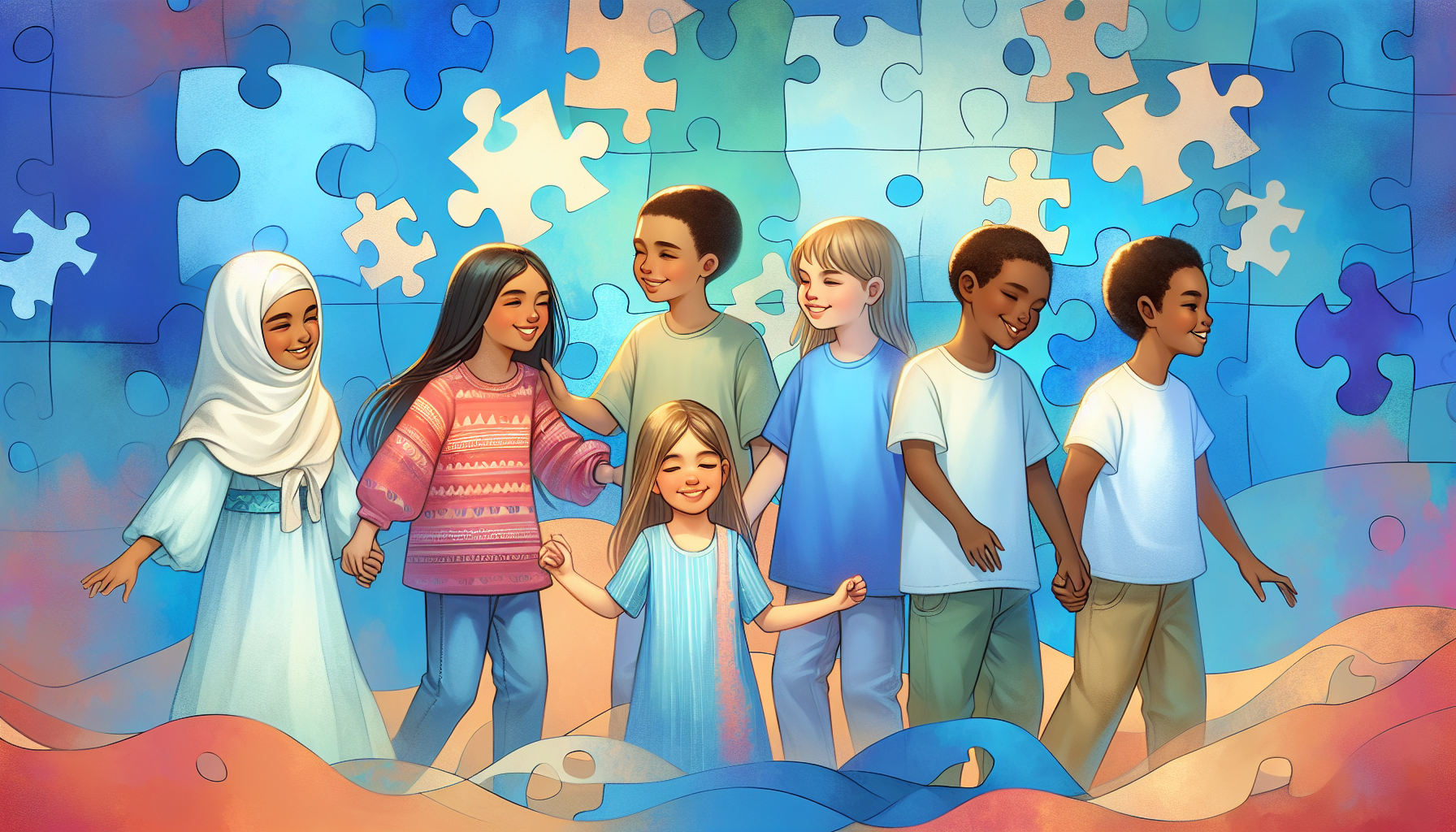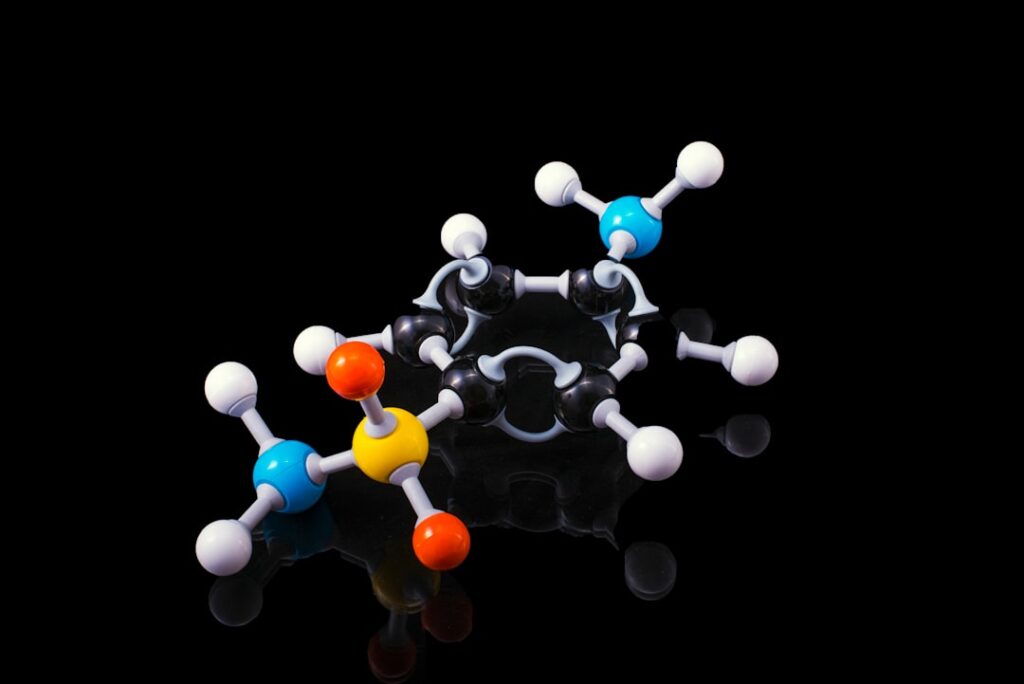Celebrating Autism Awareness Month
Autism Awareness Month is an annual event held in April to increase understanding and acceptance of individuals with autism spectrum disorder (ASD). It provides an opportunity to celebrate the contributions of people with autism and promote inclusion. In this section, we will explore the history and significance of Autism Awareness Month, as well as its international recognition.
History and Significance
Autism Awareness Month was founded in April 1970 by Bernard Rimland, Ph.D., a psychologist and autism researcher. Rimland chose April because it coincided with his son’s birthday and the start of spring [1]. The aim of this month-long observance is to raise awareness about autism and advocate for the rights and needs of individuals on the autism spectrum.

In April 1988, President Ronald Reagan issued the first presidential proclamation declaring April as National Autism Awareness Month. This proclamation marked a significant milestone in raising awareness and creating opportunities for individuals with autism.
The Office of Autism Research Coordination (OARC)/National Institute of Mental Health (NIMH) celebrates Autism Awareness Month in April 2023, honoring the contributions of individuals on the autism spectrum and the autism community to the nation and the world. They align with the United Nations and the U.S. government in recognizing the needs of people on the autism spectrum and their families.
International Recognition
Over the years, Autism Awareness Month has gained international recognition. More countries around the world are joining the cause to raise awareness and increase acceptance of individuals with autism. This global movement aims to foster understanding, support, and inclusivity for people with ASDs.
Autism Awareness Month is a worldwide event that takes place every year in April. Its significance transcends borders as it strives to create a more inclusive and accepting society for individuals with autism. By sharing stories, promoting education, and engaging in meaningful activities, the global community works together to build a more autism-friendly world.
As Autism Awareness Month continues to grow in recognition and participation, it serves as a reminder of the importance of fostering acceptance, understanding, and support for individuals on the autism spectrum. Through collective efforts, we can create a society that embraces the unique strengths and contributions of people with autism, promoting their well-being and empowering them to reach their full potential.
Symbolizing Autism Awareness
Symbolism plays a significant role in raising awareness and promoting understanding of autism. Two prominent symbols associated with Autism Awareness Month are the Puzzle Piece and the Light It Up Blue campaign.
The Puzzle Piece Symbol
The Puzzle Piece symbolizes power, strength, hope, and unity for those affected by autism spectrum disorders (ASDs) [1]. Introduced by the National Autistic Society in 1963, it has become an internationally recognized symbol representing the complexity and interconnectedness of ASDs. Just like a puzzle piece, each individual with autism is unique, with their own strengths and challenges. The symbol serves as a reminder that understanding and support are crucial in creating a complete picture of autism.
Light It Up Blue Campaign
In 2004, Autism Speaks launched the Light It Up Blue campaign to bring awareness to autism during Autism Awareness Month. The campaign encourages individuals worldwide to light up blue in honor of Autism Awareness Month, creating a visual display of support and solidarity. By illuminating prominent buildings, landmarks, and homes with blue lights, the campaign aims to raise awareness and promote understanding of autism.
The Light It Up Blue campaign has been successful in drawing attention to autism and sparking conversations about the challenges faced by individuals on the autism spectrum. It serves as a beacon of hope, reminding the community that with increased awareness and acceptance, we can create a world that celebrates the unique abilities and contributions of individuals with autism.
Symbolism, through the Puzzle Piece and the Light It Up Blue campaign, plays a vital role in Autism Awareness Month by fostering unity, raising awareness, and promoting understanding of autism spectrum disorders. These symbols serve as powerful reminders that by coming together and supporting one another, we can build a more inclusive and compassionate society for individuals on the autism spectrum.
Activities for Autism Awareness Month
During Autism Awareness Month, there are various activities that individuals can engage in to show support and raise awareness about autism. These activities aim to foster understanding, acceptance, and inclusion for individuals on the autism spectrum. Here are a few meaningful ways to get involved:
Wearing Blue
One of the most prominent activities during Autism Awareness Month is wearing blue. Wearing blue is a celebration of people on the autism spectrum, and it serves as a visual representation of support and solidarity. Many individuals, schools, organizations, and communities come together by wearing custom t-shirts and other blue attire to show their support. This activity is inclusive and suitable for both adults and children.
Fundraising Events
Hosting fundraising events is an impactful way to contribute to autism research and education. Activities such as a 5k walk or run, charity auctions, or selling merchandise like tumblers, awareness bracelets, and hats can help raise funds that can make a difference in the lives of individuals with autism. These events not only generate financial support but also provide opportunities for the community to come together, learn, and show their support for autism awareness.
Fidget Toys and Kindness Messages
Incorporating activities that directly benefit individuals with autism is another great way to participate in Autism Awareness Month. Fidget toys, such as the Tangle® Mini Puzzle and Pop It Fidget Toy Circle, can provide stress relief and sensory stimulation for individuals with autism. These toys help promote focus and concentration on a single task, making them valuable tools for individuals on the spectrum.
Spreading kindness is also a simple yet impactful activity. Writing kind messages on sticky notes and posting them around the office, school, or community can create a positive environment and raise awareness about autism. These kind messages can serve as reminders of the importance of inclusion, empathy, and understanding.
By participating in activities such as wearing blue, organizing fundraising events, and incorporating fidget toys and kindness messages, individuals can actively contribute to Autism Awareness Month. It is through these activities that we can collectively create a more inclusive and supportive society for individuals on the autism spectrum.
World Autism Awareness Day
Every year on April 2nd, World Autism Awareness Day is celebrated to raise awareness and understanding of autism spectrum disorders. Established by the United Nations General Assembly, this day serves as an opportunity to promote acceptance, inclusion, and support for individuals on the autism spectrum. The theme for this year’s World Autism Awareness Day is “Toward Autonomy and Self-Determination”.
Theme and Celebration
World Autism Awareness Day provides a platform to highlight the challenges faced by individuals with autism and to promote their rights and well-being. It encourages communities, organizations, and individuals to come together to support and advocate for inclusivity and understanding.
On this day, various events and activities are organized worldwide to promote autism awareness. These may include educational workshops, conferences, art exhibitions, and social gatherings. The goal is to foster a greater understanding of autism and create a more inclusive society that embraces and celebrates the unique strengths and talents of individuals on the spectrum.
Light It Up Blue Campaign Success
The Light It Up Blue campaign, launched by Autism Speaks in 2004, has been instrumental in raising awareness and supporting Autism Awareness Month [1]. The campaign encourages individuals and communities to wear blue on April 2nd to show their support for people with autism. Additionally, iconic landmarks and buildings around the world are illuminated in blue lights to symbolize solidarity with the autism community.
Over the years, the Light It Up Blue campaign has garnered significant participation. More than 11,000 buildings worldwide, including renowned landmarks like the Empire State Building, the Burj Khalifa, and the Sydney Opera House, have changed their lighting to blue in recognition of Autism Awareness Month [4]. The campaign’s success lies in its ability to generate widespread visibility and spark conversations about autism, ultimately leading to increased understanding and acceptance.
To further support the initiative, Autism Speaks has partnered with Home Depot, an official sponsor of World Autism Month. Home Depot offers blue light bulbs for purchase in-store or online, enabling individuals to illuminate their homes, commercial buildings, or public structures in blue to show their support for autism awareness.
World Autism Awareness Day and the Light It Up Blue campaign have successfully united individuals and communities worldwide in a collective effort to promote understanding, acceptance, and support for individuals with autism. These initiatives play a crucial role in building a more inclusive society and fostering a greater appreciation for the diverse strengths and abilities of individuals on the autism spectrum.
Involvement and Support
To truly make a difference during Autism Awareness Month, it is essential to actively participate and provide support for autistic individuals. By involving and empowering autistic individuals in decision-making processes, we can ensure that their voices and experiences are heard and valued [6]. Here are some ways you can participate and advocate for autistic individuals:
Ways to Participate
- Educate Yourself: Take the initiative to learn more about autism spectrum disorder (ASD) and its diverse characteristics. This understanding will enable you to engage with autistic individuals more effectively and promote acceptance and inclusion.
- Spread Awareness: Share accurate information about autism with your family, friends, and community. Encourage discussions and dispel common misconceptions surrounding ASD. By raising awareness, you can help create a more compassionate and inclusive society.
- Support Autism Organizations: Contribute to organizations that are led by or work alongside autistic individuals. These organizations prioritize the rights and needs of autistic individuals and involve them in decision-making processes. Your support can help them continue their valuable work in advocating for autism acceptance.
- Create Sensory-Friendly Spaces: Autism is often accompanied by sensory sensitivities. Making an effort to accommodate these sensitivities and create sensory-friendly environments is crucial. Consider implementing sensory-friendly features in public spaces, schools, and workplaces to provide autistic individuals a more comfortable and inclusive experience.
Advocacy for Autistic Individuals
Advocacy plays a vital role in ensuring the needs and rights of autistic individuals are met. Here are some ways you can advocate for autistic individuals:
- Amplify Autistic Voices: It is essential to involve autistic individuals in discussions about autism. Their unique perspectives and experiences should be central in decision-making processes [6]. By amplifying their voices, we can foster a more inclusive and representative approach to advocacy.
- Promote Acceptance: Alongside raising awareness, prioritize promoting acceptance of autistic individuals as they are. Embrace neurodiversity and celebrate the strengths and abilities of individuals on the autism spectrum. Encourage acceptance and understanding within your community and challenge stereotypes and stigmas.
- Advocate for Services and Support: Support initiatives and policies that improve access to necessary services for autistic individuals and their families. Advocate for better healthcare, education, employment opportunities, and inclusion in all aspects of society. By speaking up for their needs, you can help create a more equitable and supportive environment.
By actively participating, spreading awareness, and advocating for autistic individuals, you can contribute to the goal of creating an inclusive society that embraces and celebrates neurodiversity. Let’s work together to ensure that every individual, regardless of their neurotype, is afforded the respect, understanding, and support they deserve.
Understanding Autism Spectrum Disorder
Autism Spectrum Disorder (ASD) is a neurodevelopmental condition that affects communication, social interaction, and behavior. It is characterized by a diverse range of challenges and strengths, making each individual on the autism spectrum unique. Common characteristics of ASD may include difficulties with social interactions, repetitive behaviors, sensory sensitivities, and challenges with verbal and non-verbal communication.
Characteristics of ASD
Autism Spectrum Disorder encompasses a wide range of characteristics that can vary from person to person. Some of the common characteristics associated with ASD include:
- Difficulties with Social Interactions: Individuals with ASD may have trouble understanding and interpreting social cues, making it challenging for them to engage in typical social interactions. They may struggle with maintaining eye contact, understanding emotions, or participating in conversations.
- Repetitive Behaviors: Many individuals with ASD exhibit repetitive behaviors or interests. This can manifest as repetitive movements (such as hand flapping or rocking), a need for routines and sameness, or intense focus on specific topics or objects.
- Sensory Sensitivities: Sensory sensitivities are common among individuals with ASD. They may be hypersensitive or hyposensitive to sensory input, such as sounds, lights, textures, or smells. These sensitivities can significantly impact their daily lives and may result in sensory overload or avoidance of certain environments.
- Challenges with Communication: Communication difficulties are a hallmark characteristic of ASD. Some individuals may have delayed speech development or struggle with verbal communication. Others may have difficulty understanding non-verbal cues or using gestures to express themselves. Augmentative and alternative communication (AAC) methods may be used to support communication for those who have limited verbal abilities.
It’s important to note that each individual with ASD is unique, and the severity and combination of these characteristics can vary widely. Early intervention, therapy, and support services play a crucial role in helping individuals with ASD navigate these challenges and develop their strengths.
Myths and Realities
There are several misconceptions surrounding Autism Spectrum Disorder. It’s crucial to address these myths and promote accurate information to foster a better understanding of ASD:
- Autism is caused by poor parenting or environmental factors: This is a common myth that needs to be debunked. Autism is not caused by poor parenting or environmental factors. It is a neurodevelopmental condition with a complex interplay of genetic and environmental influences. The exact causes of ASD are still being studied.
- Autism can be cured: Autism is not a disease that can be cured. It is a lifelong condition that individuals are born with. However, with appropriate support, therapy, and interventions, individuals with ASD can learn and develop skills to lead fulfilling lives.
- All individuals with autism have savant abilities: While some individuals with ASD may exhibit exceptional skills in specific areas, such as music, art, or mathematics, not all individuals with autism have savant abilities. Each person with ASD has their own unique strengths and abilities.
- Autism only affects children: Autism is a lifelong condition that affects individuals across their lifespan. While symptoms may be more noticeable during childhood, individuals with ASD continue to navigate the challenges and strengths associated with autism as they grow into adulthood.
By understanding the true characteristics of Autism Spectrum Disorder and dispelling common myths, we can create a more inclusive society that embraces and supports individuals with autism.
Autism Awareness Month serves as a platform to raise awareness, promote acceptance, and encourage the inclusion of neurodiverse individuals in all aspects of life.
References
- https://www.deronschool.org/blog/5-history-facts-about-autism-awareness-month/
- https://iacc.hhs.gov/meetings/autism-awareness-month/2023/
- https://crestline.com/c/autism-awareness-month-activities-for-students-and-adults
- https://blog.stageslearning.com/blog/autism-awareness-month-the-history-and-today
- https://www.autismspeaks.org/world-autism-month-faq
- https://www.entrustdisabilityservices.ca/blog/four-ways-to-support-autism-awareness-month/
- https://www.ncbi.nlm.nih.gov/pmc/articles/PMC5946366/
- https://allypediatric.com/blog/autism-awareness-month-11-ways-to-show-acceptance/
- https://www.goldstarrehab.com/parent-resources/autism-awareness-month

 We've just released an article!
Check out our blog!
We've just released an article!
Check out our blog!



